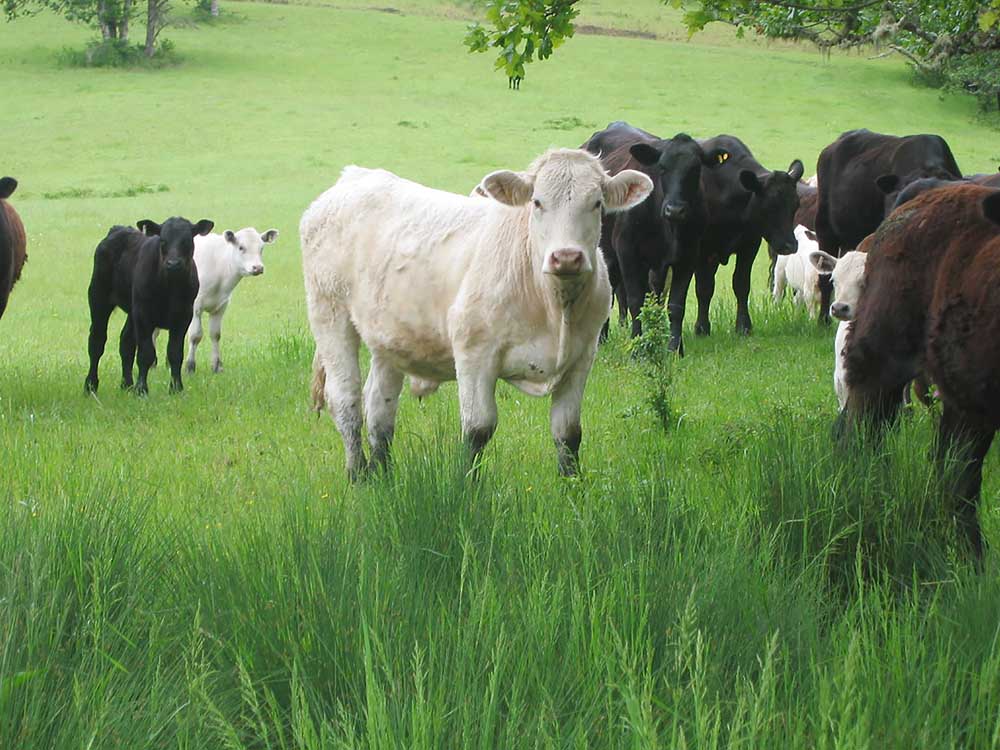Great American Outdoors Act includes funding to preserve working lands
Published 9:30 am Tuesday, August 11, 2020

- Greenbelt Land Trust purchased the 587-acre Bald Hill Farm near Corvallis, Ore., in 2013 with funding from the federal Land and Water Conservation Fund. The Great American Outdoors Act, signed by President Donald Trump on Aug. 4, includes permanent full funding for the LWCF.
On the outskirts of Corvallis, Ore., in the Mid-Willamette Valley, Bald Hill Farm is an example of how conservation and working lands can go hand-in-hand.
In addition to grazing cattle, the 587 acres are home to three endangered plant species, diverse wildlife habitat and access to 3 miles of public trails, none of which would be protected if the historic farm fell into the possession of developers hungry for real estate.
Jessica McDonald, executive director of the local Greenbelt Land Trust, said Bald Hill Farm was a top priority for years. The organization finally purchased the property in 2013 thanks in large part to nearly $1 million from a federal grant program known as the Land and Water Conservation Fund, or LWCF.
Established by Congress in 1965, the LWCF uses fees collected from offshore oil and gas drilling to preserve natural areas. The program received full permanent funding — $900 million annually — as part of the Great American Outdoors Act signed by President Donald Trump on Aug. 4.
“For us, permanent funding for the LWCF is both a very real and tangible benefit to ensure we can (achieve) our vision and mission,” McDonald said. “I also think it is a testament to the values of Americans. We hold dear conservation, we hold dear agriculture, and we hold dear hunting and fishing.”
According to the U.S. Department of the Interior, the LWCF has issued a total of $3.9 billion in grants, funding more than 40,000 state projects that have preserved 2.37 million acres.
Yet rarely has the LWCF been fully funded. The only two years the program received its full $900 million level were 1998 and 2001, said Kelley Beamer, executive director for the Coalition of Oregon Land Trusts, which represents more than 25 organizations statewide.
Beamer said the program is a critical tool not only for conservation, but for farmers, ranchers and forestland owners who make a living on these natural landscapes.
“Landowners need conservation tools that fund them to be good stewards of the land,” Beamer said. “Two-thirds of our agricultural land will change hands in the next 20 years, so we want to make sure folks aren’t forced to subsidize or reduce the stewardship they’ve put into their lands. These dollars allow those investments to be sustained.”
At Bald Hill Farm, the list of benefits runs the gamut.
Under the management of Greenbelt Land Trust, a portion of the farm continues to be leased to a local rancher, running 50 cow-calf pairs plus an additional 21 cows. Meanwhile, the property is a sanctuary for endangered prairie plants including Kincaid’s lupine, Nelson’s checkermallow and Willamette Daisy.
“We have focused grazing on certain areas of the property during certain times of the year,” McDonald said.
Across the state, the Nature Conservancy received more than $6 million in 2008 to purchase a chunk of forestland in the Imnaha canyons of northeast Oregon, including 5,906 acres within the Hells Canyon National Recreation Area.
The previous landowner, Gazelle Land and Timber, had sought a land exchange with the Forest Service, but the deal fell apart. Instead, the company began subdividing the land into approximately 30 parcels, which it intended to sell for development.
The Nature Conservancy stepped in as a surrogate owner, eventually transferring the land to the Forest Service for wildlife protection, access to public lands and issuing livestock grazing permits.
Jeff Fields, who manages the Nature Conservancy’s Zumwalt Prairie Preserve in Wallowa County, said livestock grazing is a critical economic link for local communities while protecting vulnerable native species such as salmon, steelhead, bull trout and Rocky Mountain bighorn sheep.
“This canyon is amazing, fantastic, wild country,” Fields said. “It was clear working down there that these parcels that LWCF money brought into the public trust are super critical.”
Looking ahead, full funding for the LWCF will help finalize a few more projects around, including one by the North Coast Land Conservancy and Arch Cape Water District to acquire 2,121 acres of private forest providing that town’s drinking water.
In Southern Oregon, the Trust for Public Land is working to buy the 7,500 acre Spence Mountain, a working forest with wildlife habitat and 35 miles of trails in the Klamath Basin.
“Now that this fund will essentially be double what it’s been, it’s going to be more important for landowners and partners for us to all be working together and thinking about where these investments can go,” said Beamer, with the Coalition for Oregon Land Trusts. “We really need to get our ducks in a row to be able to utilize that.”






